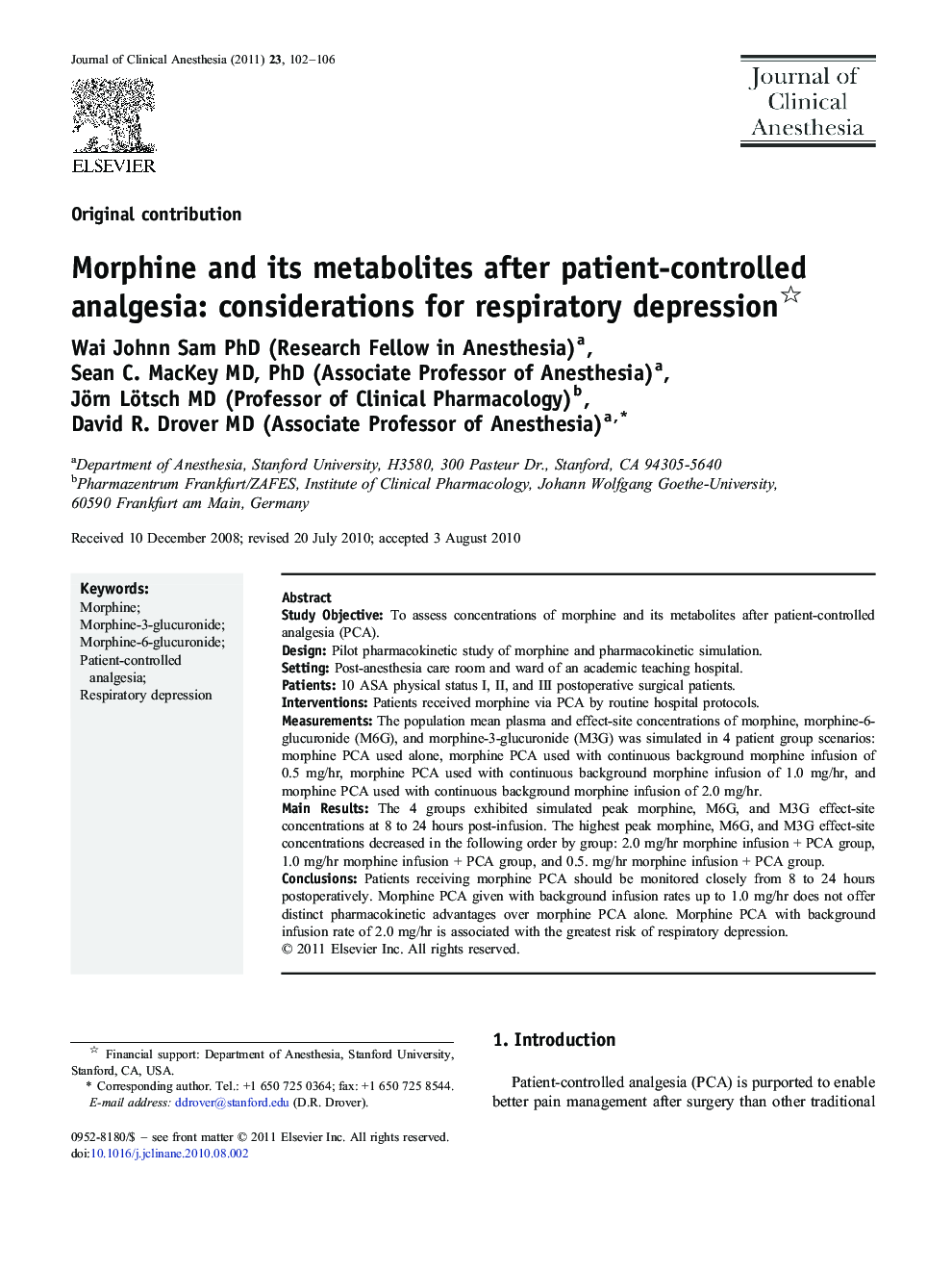| Article ID | Journal | Published Year | Pages | File Type |
|---|---|---|---|---|
| 2763471 | Journal of Clinical Anesthesia | 2011 | 5 Pages |
Study ObjectiveTo assess concentrations of morphine and its metabolites after patient-controlled analgesia (PCA).DesignPilot pharmacokinetic study of morphine and pharmacokinetic simulation.SettingPost-anesthesia care room and ward of an academic teaching hospital.Patients10 ASA physical status I, II, and III postoperative surgical patients.InterventionsPatients received morphine via PCA by routine hospital protocols.MeasurementsThe population mean plasma and effect-site concentrations of morphine, morphine-6-glucuronide (M6G), and morphine-3-glucuronide (M3G) was simulated in 4 patient group scenarios: morphine PCA used alone, morphine PCA used with continuous background morphine infusion of 0.5 mg/hr, morphine PCA used with continuous background morphine infusion of 1.0 mg/hr, and morphine PCA used with continuous background morphine infusion of 2.0 mg/hr.Main ResultsThe 4 groups exhibited simulated peak morphine, M6G, and M3G effect-site concentrations at 8 to 24 hours post-infusion. The highest peak morphine, M6G, and M3G effect-site concentrations decreased in the following order by group: 2.0 mg/hr morphine infusion + PCA group, 1.0 mg/hr morphine infusion + PCA group, and 0.5. mg/hr morphine infusion + PCA group.ConclusionsPatients receiving morphine PCA should be monitored closely from 8 to 24 hours postoperatively. Morphine PCA given with background infusion rates up to 1.0 mg/hr does not offer distinct pharmacokinetic advantages over morphine PCA alone. Morphine PCA with background infusion rate of 2.0 mg/hr is associated with the greatest risk of respiratory depression.
